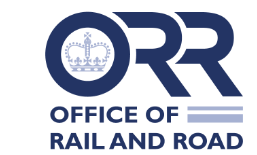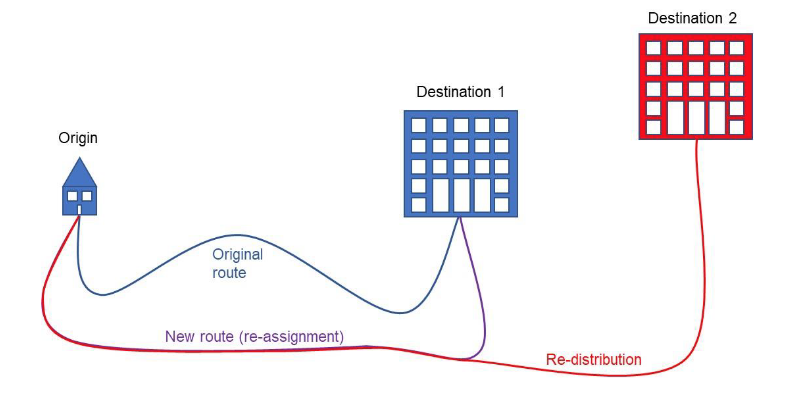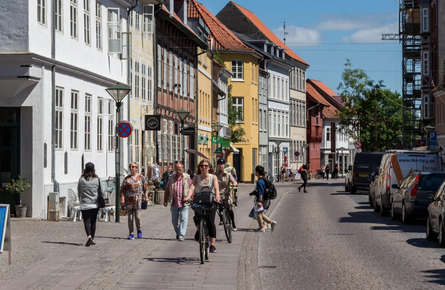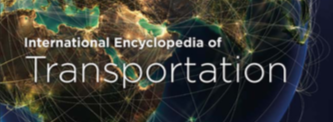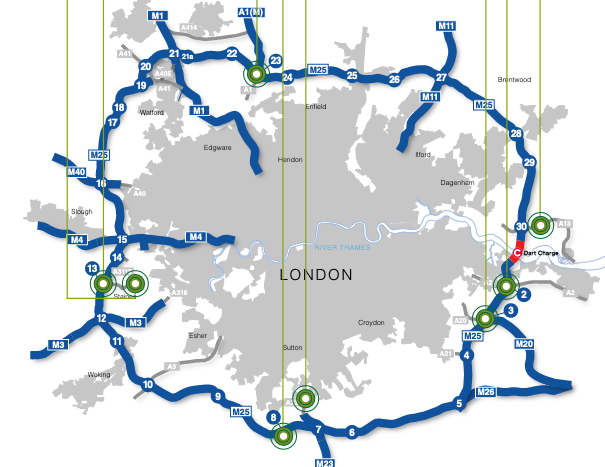Recent revisions to the road traffic statistics appear to show that there has been a substantial growth of motor vehicle traffic on GB minor roads in recent years, from 108 to 136 billion vehicle miles between 2010 and 2019, an increase of 26%. Traffic on major roads rose from 197 to 221 bvm over the same period, an increase of 12%. (DfT Road Traffic Statistics TRA0102).
Road traffic statistics are based on a combination of automatic and manual traffic counts. Major roads are well covered in that traffic in all links is counted on typical days, although not every link in every year. Given the vast number of minor roads, however, it is only possible to count traffic at a representative sample of locations every year, and the observed growth is applied to minor road traffic overall. Estimates from a fixed sample may drift over time such that the sample becomes less representative of the changing minor road network. To account for any errors incurred in the fixed sample, the sample is revised through a benchmarking exercise every decade, involving a much larger sample of locations.
The most recent minor roads benchmarking exercise was published in 2020, based on 10,000 representative locations. Overall, the benchmark adjustment for 2010-2019 was 1.19, which is the factor to be applied to 2019 data from the original sample to bring this to the observed traffic level. Data for minor roads traffic for intermediate years are adjusted pro rata, to avoid a step change in the reported traffic data. There is significant regional variation in the adjustment factor, from 1.35 for Yorkshire to 1.09 for East of England, with London at 1.32. For B roads the factor is 1.25, for C roads 1.17; while for urban roads, 1.22, and for rural roads, 1.15. Applying the regional weightings yields an increase in traffic on minor roads of 26%, as noted above, whereas the increase based on the original sample would have been 6%.
The previous benchmarking exercise published in 2009 found a smaller overall adjustment factor of 0.95, with a regional range of 0.81 to 1.08.
The substantially greater adjustment required following the recent benchmarking, compared with the earlier exercise, suggests that there has been a real change in use of minor roads, beyond errors arising from drift in the sample. Importantly, had the increase in minor road use been spread evenly across the national road network, the traffic estimation based on the sample would have been close to that from the benchmark exercise. Hence the major difference between sample and benchmark indicates considerable heterogeneity of minor road traffic growth. Moreover, the fact that the sample failed to detect the traffic growth suggests either that the process for establishing the sample was deficient in some way, or that significant changes occurred in use of minor roads over a decade.
DfT statisticians have created a revised minor roads representative sample (4,400 locations) from the latest benchmark data, which will be used for the coming decade. It would be desirable to have comparative analysis of the previous and the new samples, to gain insight into what has been happening on the minor road network. Regrettably, the statisticians only report findings, and do not attempt to explain them, which leaves uncertainty as to the nature and cause of the reported changes to traffic volumes. The representative nature of the new sample must be questionable if the reasons for the failure of the previous sample to reflect reality are not understood and addressed.
Transport for London has recognised this uncertainty. The recent Travel in London Report 13 discusses the implications of the minor roads traffic correction (p92). The revisions mean that, for 2018, the DfT estimate of vehicle kilometres was 20% higher than previously reported last year (and included in Travel in London Report 12). The previous estimate suggested a fall of 1.8% in vehicle kilometres in London between 2009 and 2018, whereas the revised series now suggests an increase of 17.9% over the same time period, this change wholly arising from revisions to the minor road estimates. TfL notes that it is currently working through how the DfT have made this assessment, and also what this could mean for London data sets. For the moment, TfL is relying on its own traffic monitoring data, although it does not report traffic on minor roads separately.
The National Travel Survey could provide a cross-check on the traffic data. Average distance travelled by car/van driver decreased from 3388 miles per year in 2010 to 3198 miles in 2019, a decline of 5.6% (NTS0303). The GB population grew from 60.95m in 2010 to 64.90m in 2019, an increase of 6.5%. The net increase in car use of about one percent is inconsistent with the new road traffic statistics which show an increase in traffic for all roads of 17% over the same period. The NTS employs a fresh sample of respondents each year, so sample drift should not be a concern. However, it is not clear that the travel diary technique would pick up rerouting to minor roads, given that respondents are asked to provide their own estimates of distance travelled for each trip.
Possible causes of increase in traffic on minor roads
One factor contributing to the growth of traffic on minor roads is the increase in van traffic, including that arising from the growth of online shopping with home deliveries. The number of vans (light commercial vehicles) registered in Britain increased by 28% between 2010 and 2019. Total van traffic increased by 34% over this period, with an increase of 49% on urban minor roads compared with 10% on urban ‘A’ roads, although ‘delivery/collection of goods’ was less important in respect of journey purpose than ‘carrying equipment, tools or materials’. However, in 2019 van traffic amounted to 15% of traffic on urban minor roads, and 19% on rural minor roads, cars being responsible for 82% and 78% of traffic respectively. So, the growth of van traffic on minor roads is responsible for only part of the overall traffic growth on these roads.
Another possible explanation of the apparent large growth of traffic on minor roads is the widespread use of digital navigation (satnav) that offers routes that take account of traffic conditions and estimated journey times. Such devices make possible the general use of minor roads that previously were largely confined to those with local knowledge. This is likely to occur when major roads are congested and represents an effective increase in the capacity of the road network, so generating additional traffic – the converse of the ‘disappearance’ of traffic when carriageway is reduced. Increased use of minor roads is problematic when policy is concerned to decarbonise the transport system and to promote active travel, which these roads facilitate.
The possible role of digital navigation might be investigated by an analysis of the correlation of the upward adjustment factor for each minor road sample location with traffic volumes on nearby major roads – to test the hypothesis that there would be more use of minor roads in areas where major roads were most congested. If so, this factor should be taken into account when setting up the new minor roads sample for the coming decade.
The use of digital navigation has been growing and may continue to grow in the future. A better understanding of the phenomenon would be important for forecasting road traffic growth by means of the National Transport Model and models at regional level and below.
A further possible cause of the changed distribution of traffic on minor roads arises from intentional interventions aimed at reducing such traffic. It has long been the practice to discourage ‘rat running’ on urban minor roads by means of suitable physical control measures, as are used in low-traffic neighbourhoods (LTN). Such measures would reduce traffic in certain locations while possibly increasing it in others through diversion. Some locations in the minor roads sample may be so affected. If LTNs and similar measures increase over time, the sample may become increasingly unrepresentative, a factor that should be taken into account in setting up the new sample. However, the net effect of intentional interventions would be to reduce traffic overall, so this cannot account for the reported growth of traffic on minor roads.
The growth of minor road use by through traffic apparently facilitated by digital navigation would strengthen the case for implementing LTN measures. Alternatively, or additionally, the providers of digital navigation might be encouraged to omit routes that direct through traffic along minor roads.
More generally, the impact of digital navigation on the functioning of the whole road network seems likely to be significant and therefore worthy of investigation.
The above considerations prompt a number of questions:
- How reliable are the statistics for motor vehicle use of minor roads, given the apparent sensitivity to the sampling of locations?
- How reliable are the NTS findings for car use?
- What information is available on the likely causes of the increase of traffic on minor roads?
- What is known of the impact of digital navigation on the road network?
- What are the implications of digital navigation for transport and traffic modelling?
Summary
The reported increase in motor vehicle traffic on minor roads over the past ten years is substantial and locationally heterogenous, for reasons that are unclear. This lack of understanding raises methodological questions about the sampling of minor roads. The reported increase in traffic is not consistent with the findings of the National Travel Survey, as well as being of concern to Transport for London. While interventions to reduce traffic on urban minor roads may increase the heterogeneity of the sample, they would not increase the volume of traffic. Hence this increase is most likely due to the growing use of digital navigation devices that allow minor roads to be used by those without local knowledge. This has implication for transport modelling as well as for policies to decarbonise the transport system and encourage active travel.
This blog post is the text of an article published in Local Transport Today 19 March 2021

